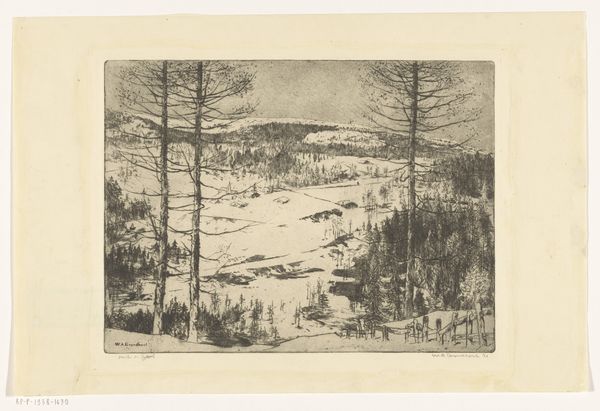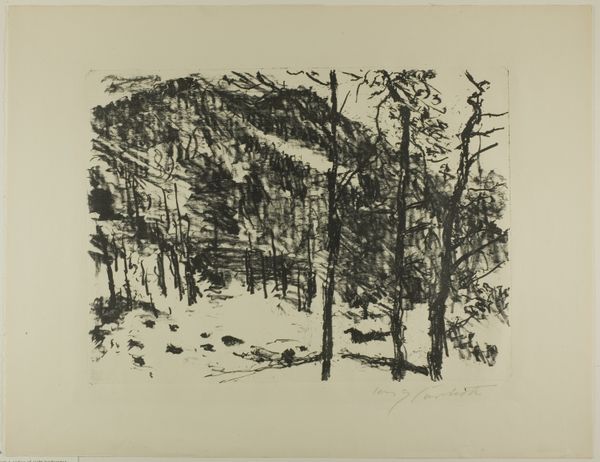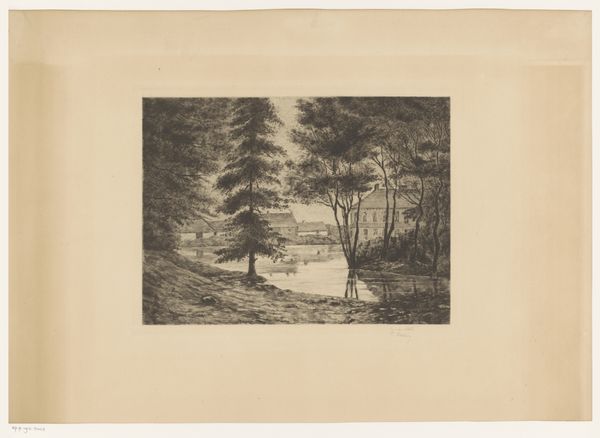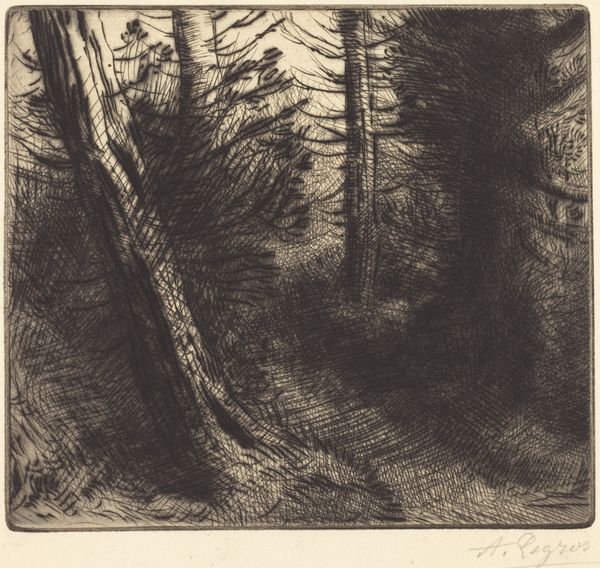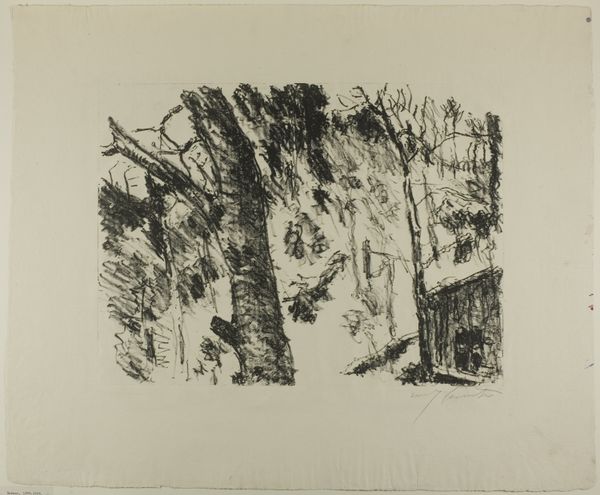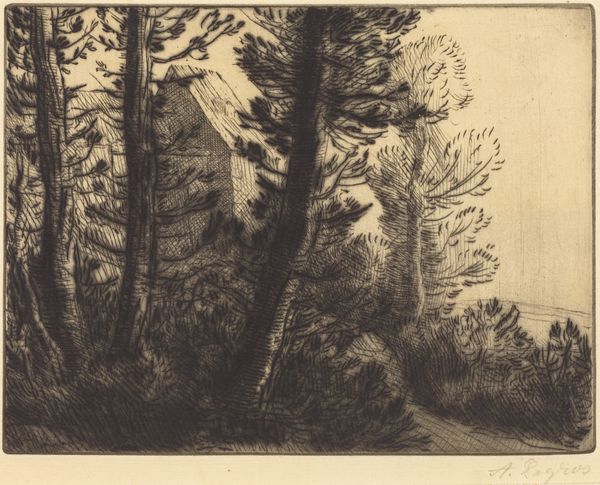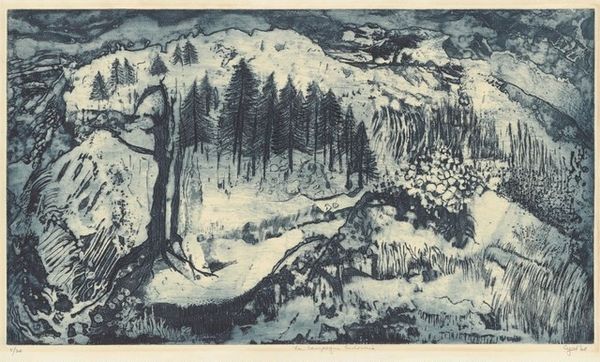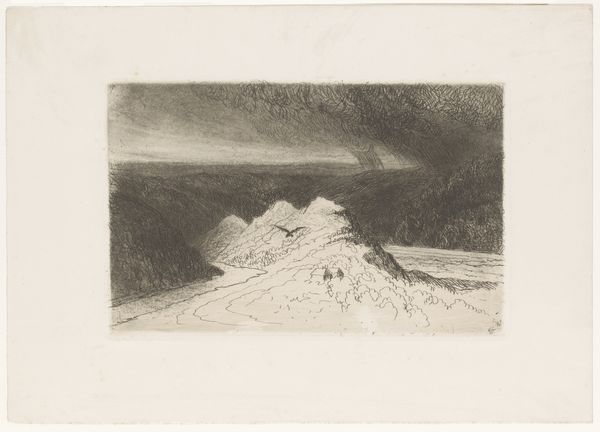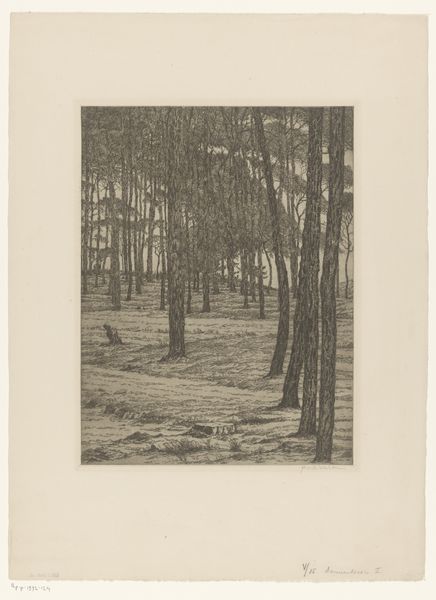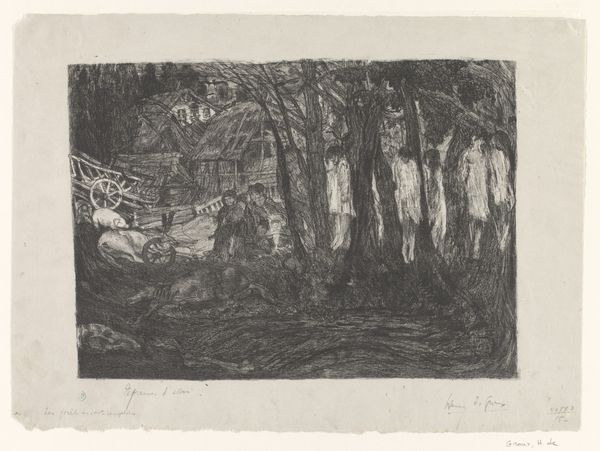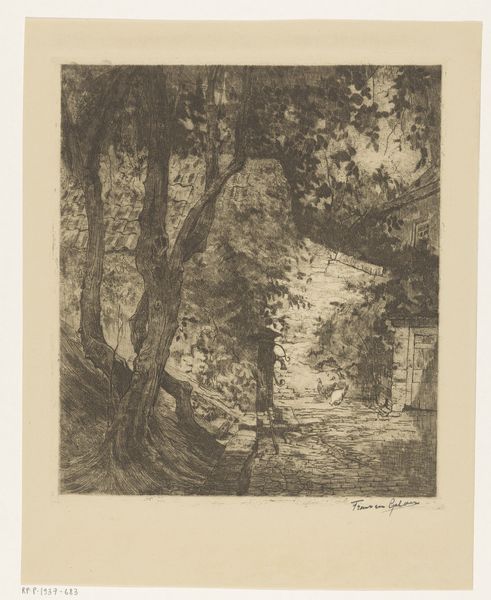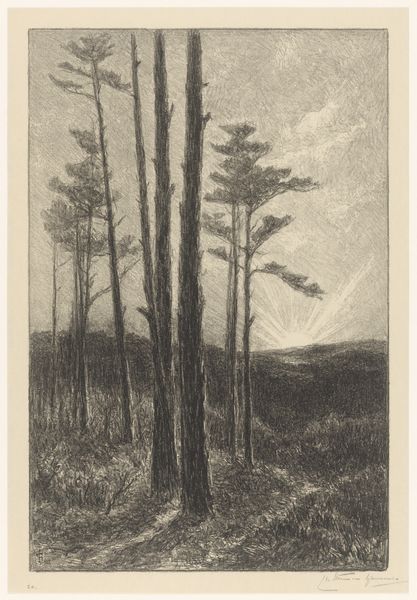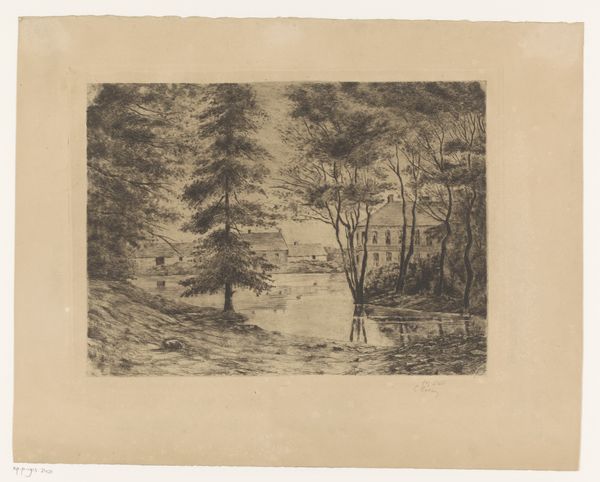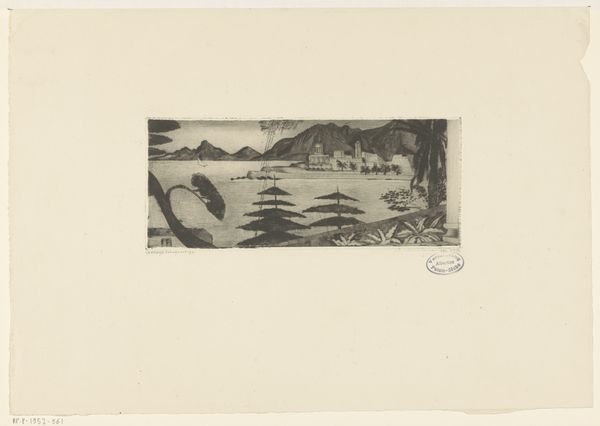
print, woodcut
#
tree
#
snow
# print
#
landscape
#
german-expressionism
#
mountain
#
woodcut
#
line
#
northern-renaissance
Dimensions: height 420 mm, width 541 mm
Copyright: Rijks Museum: Open Domain
Curator: Wilhelm Laage's 1914 woodcut, "Die Lärche," or "The Larch," presents a striking landscape. Editor: Immediately, I see a stark contrast, almost violent, between the dark, dominating tree and the expansive, snow-covered mountains. It feels isolated, austere. Curator: Yes, the material reality of woodcut lends itself to that drama. The bold lines carved into the block dictate the composition. There's an immediacy to the printmaking process itself; the artist directly engaged with the physical material. He has adopted something similar to that employed by artists in the Northern Renaissance. Editor: The tree acts as more than just a physical object. It’s a symbol, perhaps of endurance in a harsh environment. The mountain also traditionally signifies resilience, but what is its cultural resonance during this particular moment of the start of WWI? Did Laage choose to use imagery in contrast with urban environments to represent the purity of the country? Curator: Absolutely. Think about the wood itself, too. Locally sourced wood from the German landscape. Its transformation into a print, a reproducible artwork, allows for wider circulation, a sort of democratization of the landscape as a commodity, almost a postcard, although more emotive. Editor: Look at the rendering of the snow—it's almost liquid in appearance because of the swirling marks that are used. It has this double-edged significance as beautiful and awe-inspiring but also concealing and isolating. Laage is a commentator here in terms of the symbolic representation and visual vocabulary used at the time. Curator: Precisely, it also highlights a tension, doesn’t it? Mass production allows the work to circulate broadly and rapidly, while its thematic message champions nature’s slow persistence. The tension can also exist in Laage's mind regarding traditional print making methods and the move to newer techniques. Editor: These historical circumstances—and the work’s striking visual symbols—contribute to how deeply affecting “The Larch” still is. The larch transcends representation and has psychological layers beneath what’s easily recognisable. Curator: It offers a compelling look at the complex relationship between art, materials, and the cultural moment in which it was produced. Editor: Thank you for shedding light on that, with "Die Lärche" resonating beyond its surface imagery and into a deeper space.
Comments
No comments
Be the first to comment and join the conversation on the ultimate creative platform.
